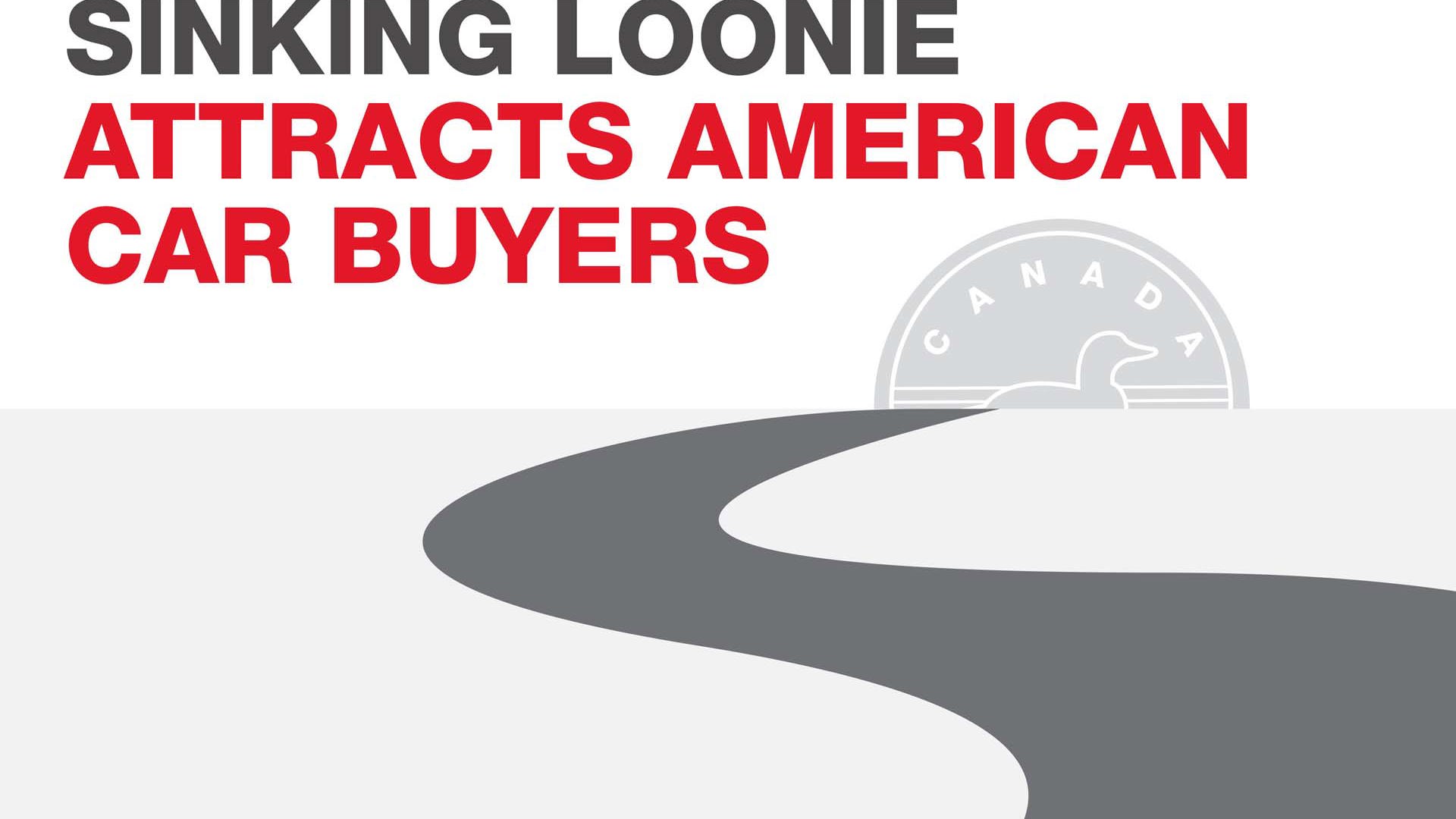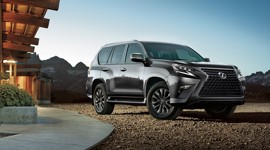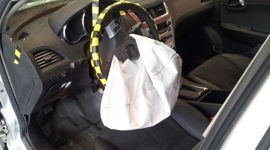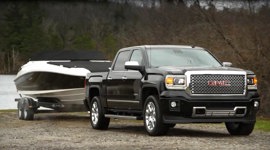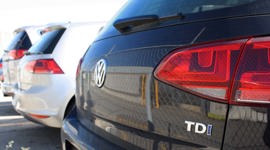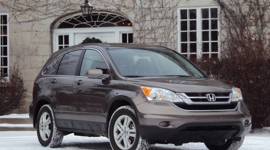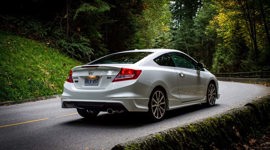It was short but sweet. Most recently, the Canadian dollar traded at close to par with the US dollar for a brief but (for many consumers) truly enjoyable four years (2010-2013). It was during that period that Canadians were actually wooed by American retailers building monster malls in small towns at border crossings.
Naturally, Canadians bought US used cars in droves then turned their attention to new cars. Canadian car manufacturers quickly parried by implementing programs to stop us returning from a trip to the US with a shiny new Honda Accord, or a shiny new anything on wheels, for that matter.
After all, the new car MSRP was lower in the US, right? And if our dollar was at par, well – as Eddie Shack used to say, “that spells BARGOON!”
And Canadians love bargoons. It’s a national trait.
Now the shoe is on the other foot. Our dollar has returned to its previous limp state, and guess who’s nosing around autoTRADER.ca? Those pesky bluecoats, that’s who. What are they doing? They’re salivating at the prospect of bagging some of our tasty and, from their perspective, hugely undervalued used cars.
It’s a fact. As our dollar fell, so used vehicle exports grew. Last year Americans bought 200,000 Canadian used vehicles and shipped them south – not all via autoTRADER.ca, grant you, but it’s a significant increase over previous years and the highest level of used car sales to the US since 2002, according to industry analyst Denis Desrosiers.
As autoTRADER.ca’s Director of Marketing Ian MacDonald explains, “A weak Loonie makes it less expensive for Canadian manufacturers and exporters to sell their goods south of the border. More people looking to purchase Canadian goods increases demand. A larger pool of consumers means dealerships and private sellers have seen significantly higher sales year over year.”
The increase in demand is reflected online. Based on autoTRADER.ca data from November 1 - December 31, 2015, US traffic to autoTRADER.ca increased by 27.7 percent versus the same period in 2014. Additionally, total US-based searches on autoTRADER.ca are up 49.9 percent, 21 states show a 50+ percent increase, and 40 states show a double-digit year-over-year increase. And the highest traffic generators and most significant increases by region aren’t necessarily Border States; Oregon, California and Florida were the top three site visitors by State.
Guess what? Americans like bargoons, too…
What does it mean for Canadian consumers? Well, let’s put it in perspective. Canadian manufacturers had a terrific year in 2015 selling 1.9 million new cars, and it was an equally great year for new car sales in the US (nearly 17.5 million sold). The used car market is bigger than the new car market. In Canada in 2014, 2.7 million used cars were sold; in the US it was nearly 40 million. But note that, in Canada at least, the number is trending down. In 2011, for example, over three million used cars were sold in Canada
One of the reasons the used car market hasn’t grown in Canada over the past few years (we await the 2015 numbers) is because of downward MSRP adjustments that were made to new cars to better reflect the Canadian dollar’s former parity with the US dollar (oops…). That made new cars more affordable (although watch for price creep now).
Added to that, low interest rates have put large-ticket items like cars and houses within reach of more people, and car manufacturers have been offering a range of genuine incentives over the past few years, like zero-percent financing, that sweetened the pot even more.
In other words, why buy used? Hence the erosion of used car sales and the demand from many car buyers for a higher quality “choice” used car, if they’re going to buy used at all.
So we see Honda Certified Used Cars, Porsche Approved Certified Pre-Owned, GM, Mercedes-Benz and Subaru Certified Pre-Owned, along with similar programs throughout the industry. They want your late-model used vehicle. They really do.
Used car dealers do, as well. The trick is to find four-to-seven year-old low-kilometre vehicles with modern features like Bluetooth, rearview camera and blind spot monitoring, and according to a recent Edmonton Sun article, the issue is that US buyers will pay almost full Canadian retail for such vehicles – especially trucks and SUVs -- at Canadian wholesale vehicle auctions. This results in a reduction of supply for Canadian dealers and consumers alike, which and drives up retail prices for buyers here.
So those US-based used car searches are likely not only confined to individuals looking for quick cross-border bargain. They surely include dealers ready to import cars to the US by the truckload if they can organize the process profitably. An added incentive is that there’s no cross-border duty to be paid on vehicles manufactured in North America.
Looking at the autoTRADER.ca data, the top three US-based search increases are for the BMW M, Buick Enclave and the Cadillac XLR, and the top three US-based most searched vehicles (2014, 2015) are the Lexus RX, Dodge Challenger and the GMC Sierra 1500. The Lexus, Buick and the GMC would be representatives of the vehicles most in demand for the US market (they’re built in North America, too). The others are in the luxury and performance sector but realistically, such vehicles exist in very small numbers in Canada.
For instance, good luck finding a 2010 Cadillac XLR in Canada – there was only one sold in the entire country that year. In fact, the total number of XLRs sold here from 2007-2010 was 106. In comparison, they sold 3,975 in the US so that would be the place to look for an XLR.
Dodge Challengers likewise. As iconic a vehicle as it is, you might be surprised at how few are sold in Canada. The best year ever for the Challenger in Canada was 2010 when 3,095 were sold. In 2012, Canadians bought only 1,485 Challengers although the number did increase to 2,669 for 2015. In comparison, 66,365 Challengers were sold in the US in 2015 alone. Don’t forget, the greater supply in the US will potentially moderate prices in comparison with the few examples available here (where they’re probably in storage for half the year anyway).
Nonetheless, while the 200,000 used cars imported by US buyers represents only 0.5 percent of the nearly 40,000,000 used cars sold in that country each year, the same number represents 7.4 percent of the 2.7 million used cars (2014) sold here. And if we assume that the majority of those 200,000 used cars are the cream of the crop, so to speak, they would represent a much larger percentage of the same category of vehicles here.
And expect our choice classic cars to be targeted as well, although we target theirs when our dollar’s good so it’s tit-for-tat when you think about it.
All to say, if the Canadian dollar stays low in relation to the US dollar, expect domestic values of choice used cars to increase in reaction to reduced supply (you should get good value for your choice trade-in!).
autoTRADER’s MacDonald concurs: “There is also an added benefit that the manufacturers have yet to reflect the full drop of the Canadian dollar in the pricing of vehicles in Canada. What this means is that Canadians are getting great ‘value’ for cars purchased domestically as well.”
So believe the dealers when they say they really, really want (for example) your 2012 Volkswagen Tiguan Sport (as my partner’s local VW dealer keeps insisting). You should be able to leverage such a vehicle into an excellent deal on a new one.
Bottom line: if you’re looking for a bargain and you’ve got a decent trade-in, this could be a very propitious time to buy new.
